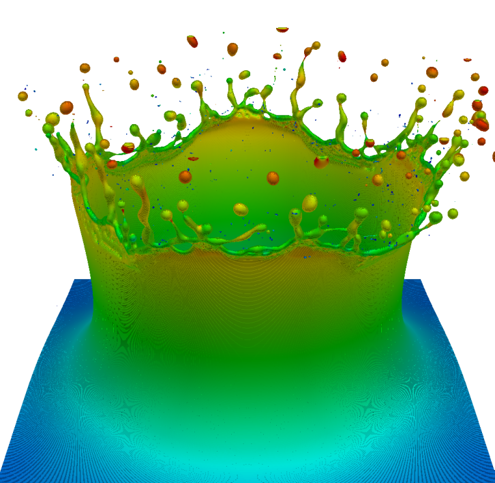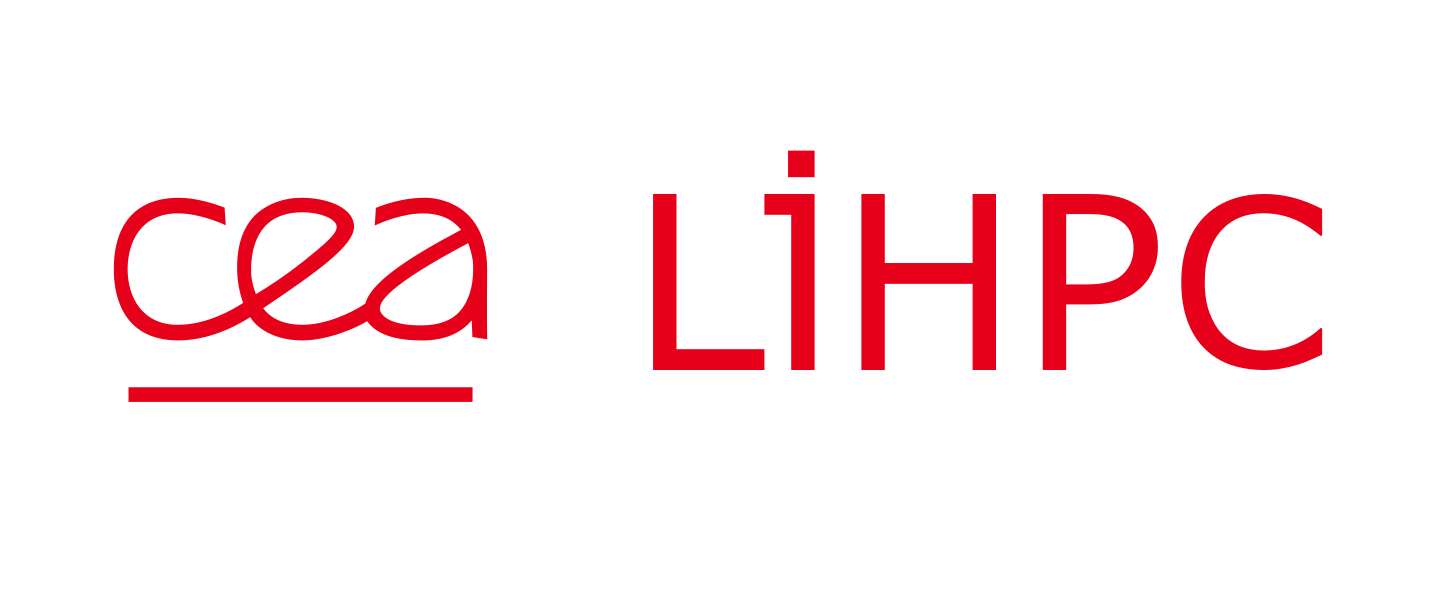Closely related to the previous theme, numerical methods, generally tested and validated on very simple mock-ups, are implemented within HPC-oriented collaborative codes. These codes can be of different types depending on the numerical approach chosen (structured or unstructured codes, AMR, ALE, …). The LiHPC teams are developing two major platforms for massively parallel computation, one on AMR Cartesian meshes (ARMEN platform), the other on ALE Lagrangian meshes (PUGS platform). Having to follow the evolution of supercomputer architecture, these platforms are also in constant evolution and allow today (to varying degrees in terms of eligible solvers) different levels of parallelism: macroscopic (MPI domain decomposition), mesoscopic (OpenMP multithreading) and microscopic (SIMD vectorization). Mini-applications to test the parallelism of specific approaches are also developed and maintained (heterogeneous computers and GP-GPU contribution for example). In addition to the development of these HPC simulation codes and their “porting” to new architectures, this theme naturally includes performance studies in collaboration with computer scientists, as well as studies on numerical precision and error propagation in floating arithmetic, the contribution of new approaches made possible by the increase in computing power, such as “Machine Learning”, etc.




